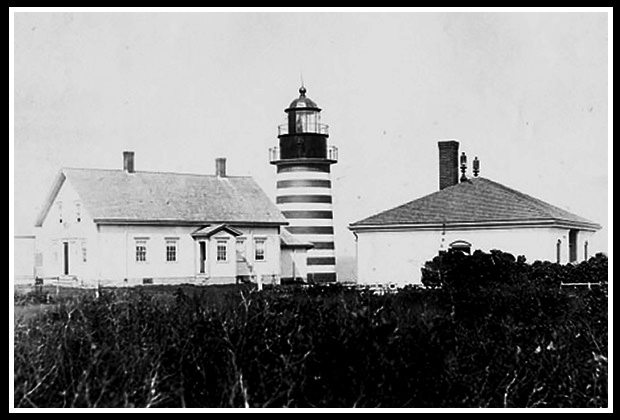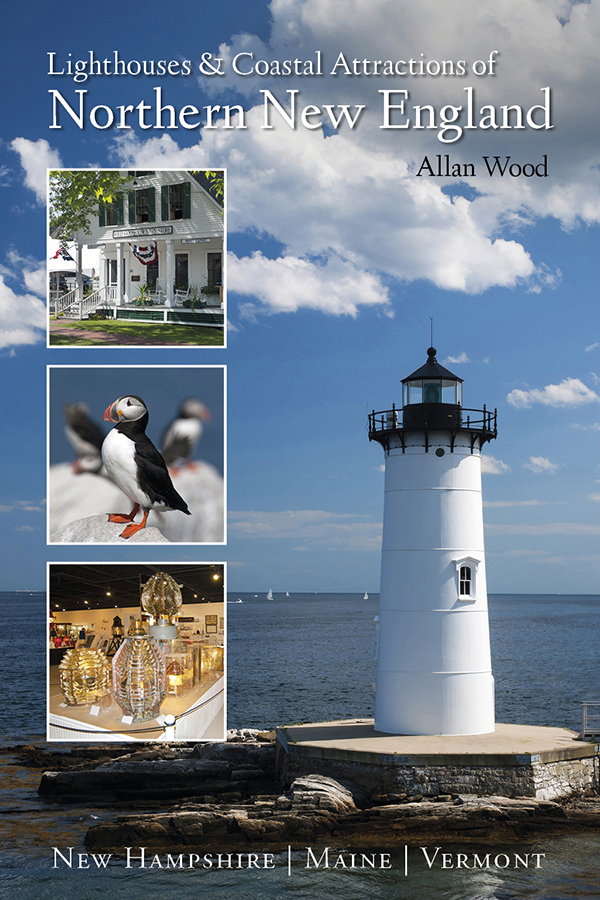West Quoddy Head Lighthouse
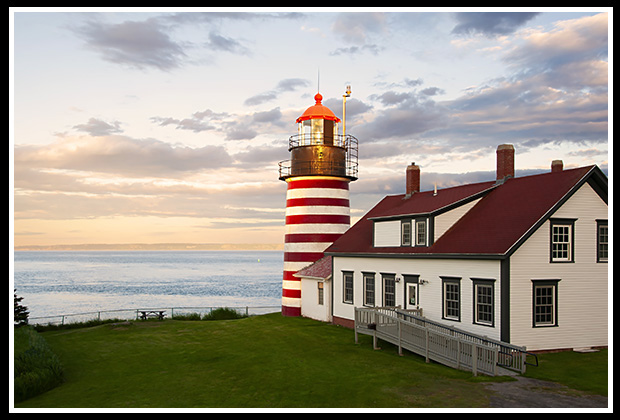
823 Quoddy Head Road, Lubec, Maine
Built in 1808
Location:
Overlooking Quoddy Narrows near the Bay of Fundy at Quoddy Head State Park, off Route 189 from Route 1.
Latitude: 44° 48' 55" N
Longitude: 66° 57' 04" W
Historic Stories:
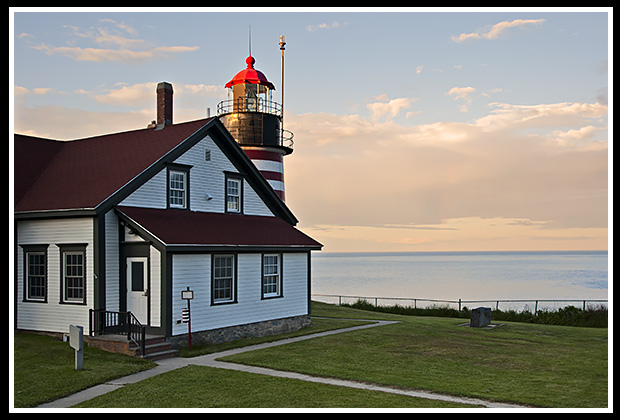
| West Quoddy Head Lighthouse is one of the oldest lighthouses in Maine. |
In 1806, President Thomas Jefferson was convinced of the need for a lighthouse and West Quoddy Head was completed in 1808 with Thomas Dexter as its first keeper. Dexter complained to the Department of Treasury that the soil wasn’t rich enough to maintain a garden to feed his family and had to travel for his supplies, so they increased his salary from $250 to $300 a year.
To warn ships of the frequent fog banks that were created from the Bay of Fundy, a 500-pound fog bell was installed at West Quoddy Head light in 1820. It was one of the nation’s first fog bells. The keeper at the time complained about the extra work, and asked for a pay raise. After seven years of petitioning his employers, he got an extra $70 a year for the extra duties of having to constantly ring it in the frequent foggy weather.
With mariners having problems hearing the bell far enough away from the rocks, the station tried a high-pitched bell, then a 1,500-pound deeper sounding bell, and then a 14-foot triangular steel bar. None were proved satisfactory. Today West Quoddy Head has a powerful foghorn activated by a robotic fog-sensing device.
West Quoddy Head Lighthouse was rebuilt in 1831 due to its original poor construction, then in 1857 the tower was completely reconstructed and, as it stands today, rises 85-feet above the water.
| Its distinctive red-and-white stripes offer daytime mariners better visibility, especially in winter months. |
Early West Quoddy Head Light |
On a thick foggy day on September 22, 1915, the three-masted schooner Lanie Cobb was heading to Calais, Maine, from New York with a cargo of coal when it ran aground on the ledges near the lighthouse and broke in two. The crew members were immediately rescued without any fatalities.
The keepers’ children had a 2-mile walk to school in Lubec. In the 1920’s, the children of Keeper Marston found lumber washed ashore and built a little play hut in the woods for local children to gather. The structure was still standing into the 1990’s.
The lighthouse automated in 1988 with Malcolm Rouse as its last Keeper. It recently had restoration work done completed in 2008.
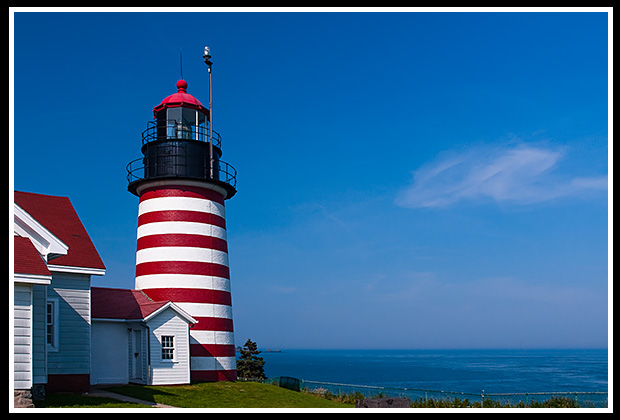
Places to Visit Nearby:
Lubec is located on the banks of the St. Croix River near the United States/Canada border. This former shipbuilding and sardine-packing town is the first town in the U.S. to see the sunrise.
| It has no shopping malls, fast food restaurants, of stoplights, only rugged natural beauty that hasn’t changed. This is truly a place to disconnect and enjoy the outdoors. | 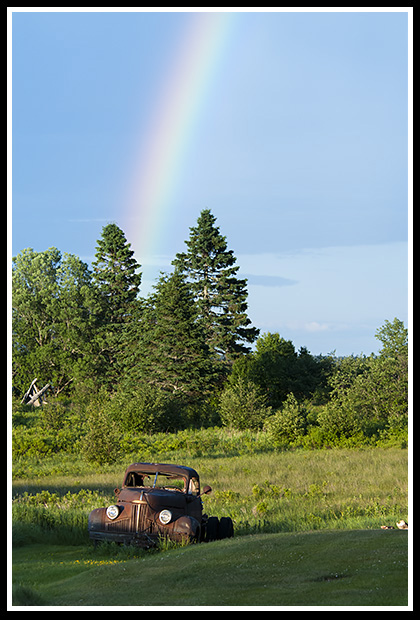 |
The community consists of artists, a few specialty shops, and fishermen.
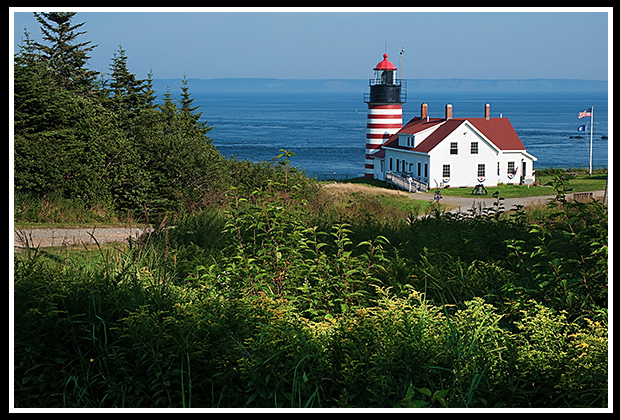
|
The views at West Quoddy Head lighthouse are quite stunning with Canada’s Grand Manan Island in front of you as you stand over cliffs to the sea. |
The tower is closed to the public except on special occasions, but visitors are welcome to enjoy the lighthouse grounds and explore the Visitor Center and Museum run by the West Quoddy Head Light Keepers' Association. Take a walk along the rocky beach below. Some parts of the park have patches of actual arctic tundra, which you would find much further up north.
For those who wish to stay overnight near the lighthouse, the once deteriorated buildings of the West Quoddy Head Coast Guard Station, used for housing crewmembers and equipment, have been totally restored and reconstructed to accommodate visitors, with the lighthouse only a few minutes walking distance away.
| In early summer purple lupine flowers are everywhere and biking is a great way to go exploring and take in this spectacular area. | 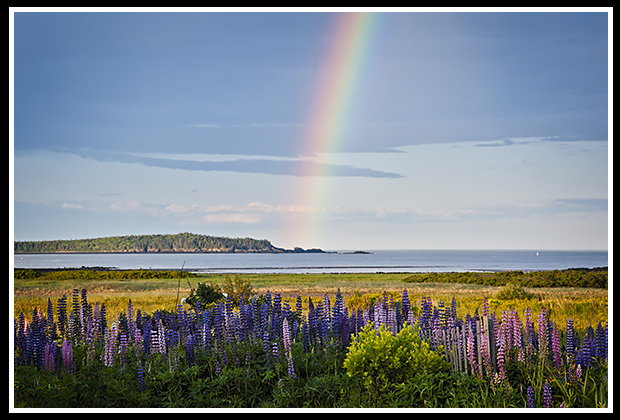
|
There are also whale watching, deep sea fishing, and lighthouse tours out of Lubec as well.
Take some time and hike through the miles of nature trails in Quoddy State Park, over scenic coastal terrain. Many of these trails are used on what is known as the Quoddy Loop Trail System, which includes trails across the border onto Campobello Island in Canada.
There are plenty of historic and local tours available within the Lubec area and over the border onto Campobello Island in Canada. |
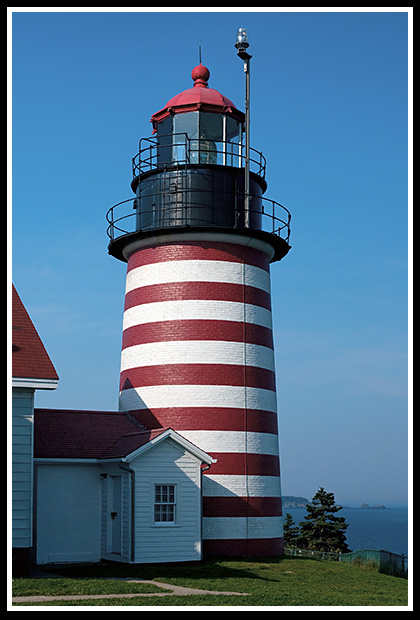
|
For something quite unique observe the "Old Sow," the largest tidal whirlpool in the Western Hemisphere. The natural phenomenon lies north of Lubec, between Deer Island (Canada) and Moose Island (USA). In Lubec, Downeast Charter Boat Tours not only passes by the whirlpool on their whale watch tour in their 25-foot lobster yacht, but provides the thrill of also riding the whirlpool! For those who want to drive an hour north of Lubec onto Moose Island, Eastport Windjammers also passes by the whirlpool on their whale watch tour, which also passes by Canada's East Quoddy (Head Harbor) Lighthouse.
Ironically West Quoddy Head Lighthouse, situated on forty foot high cliffs, overlooking Quoddy Narrows near the Bay of Fundy, stands on the easternmost point of the United States, although it is west of East Quoddy Head Light (also referred to as Head Harbor Light) located a few miles away on Campobello Island, in Canada.
Speaking of the sister lighthouse to West Quoddy Head Light, if you have the time, cross the border into Canada and explore Roosevelt Park on Campobello Island. There you'll also find Mulholland Point Lighthouse with plenty of walking trails.
| Then, following a right after Roosevelt's cottage (15 Miles), you'll enjoy the stunning views of Head Harbor (East Quoddy Head) Lighthouse with its giant red cross painted on its tower. | 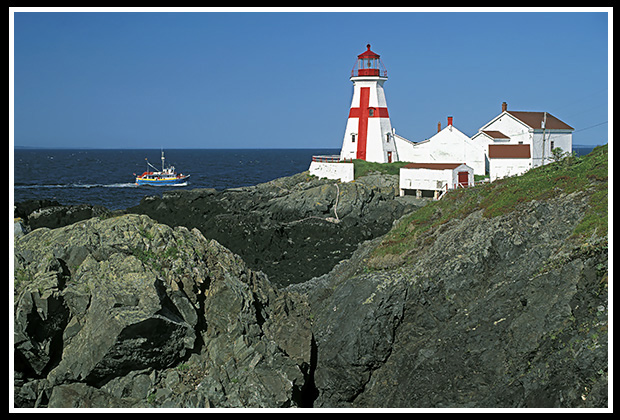
Head Harbor |
If you time it right, at low tide you can walk over to the lighthouse, but be wary that when the tide comes in, get off the island quickly as it has some of the fastest accumulation of water and highest tides within a short period of time. Its high tides can run as high as 50 feet.
Directions:
-
From US Route 1 take Route 189 at Whiting and head towards the town of Lubec near the Canadian border.
-
After about ten miles, turn right onto the road to Quoddy Head State Park.
-
Follow this road for about five miles to the parking lot by the lighthouse.
-
You're at the eastern most point in the United States with some incredible views of cliffs and rocky shores. You'll also see Canada's glorious Grand Manan Island.
Contact Info:
West Quoddy Head Light Keepers Association
PO Box 378
Lubec, ME 04652
Phone: (207) 733-2180
Email: info@westquoddy.com
Local Boat Tours
Bay Cruises at the Wharf
Own the Inn at the Waterfront, and offer whale watching and lighthouse tours.
69 Johnson St
Lubec, Maine 04652
(207) 733-4400 or (239) 571-0208 (cell)
Email: TheInnonTheWharf@aol.com
Downeast Charter Boat Tours
Offers whale watching on a 25' Northern Bay lobster boat and may pass by the Lubec lighthouses.
31 Johnson Street Lubec, ME 04652
(207) 733-2009
Books to Explore
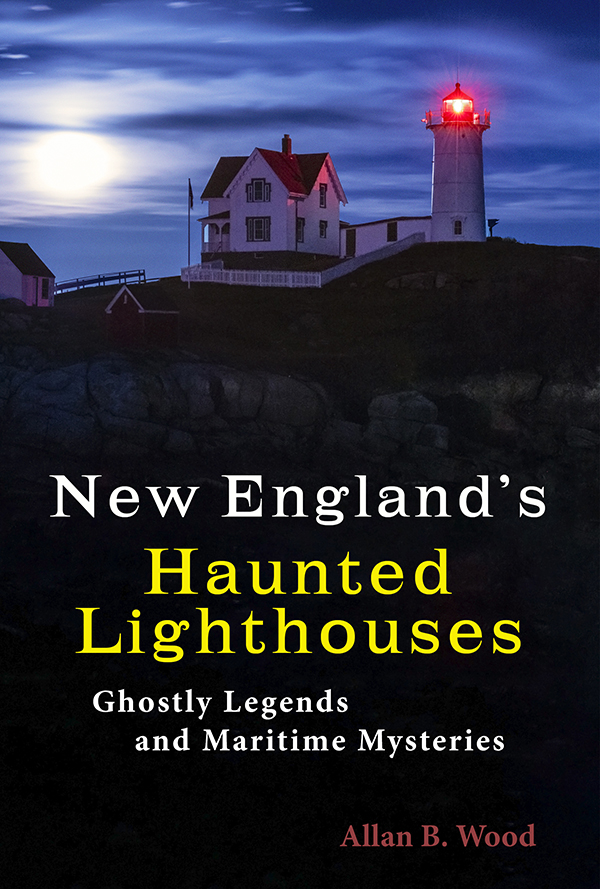
Available in paperback. |
New England's Haunted Lighthouses: Explore the historical mysteries surrounding the haunted lighthouses of New England! This image-rich book features ghost stories about spirits of devoted keepers who linger, victims of foul play or local shipwrecks, ghost ships, lost souls, and more, blending maritime history with the supernatural. Explore the tales linked with these iconic beacons! |
Lighthouses and Coastal Attractions of Northern New England: This 300-page lighthouse tourism book showcases human interest stories from each of the 76 lighthouses from these northern New England states, along with plenty of coastal attractions and tours near each beacon, including sailing and whale watching tours, and contact info to plan your special vacation. Look inside! |
|
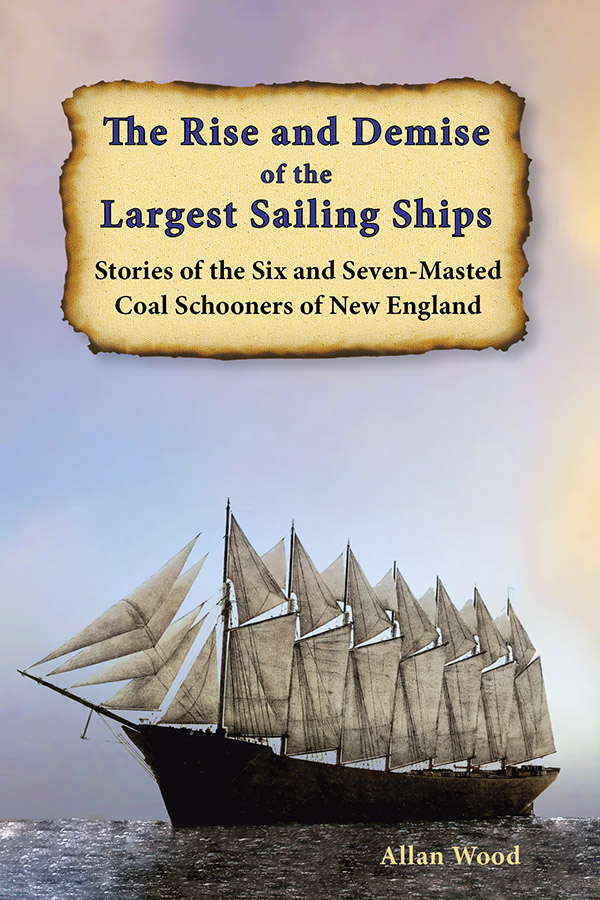
Available in paperback, hard cover, and as an eBook for all devices. |
The Rise and Demise of the Largest Sailing Ships: In the early 1900s, New England shipbuilders constructed the world’s largest sailing ships amid social and political reforms. These giants were built to carry massive quantities of coal and building supplies, and measured longer than a football field! A few of these vessels, when fierce competition for coal arose, would travel up to northern Maine, Calais, and southeastern Canada to transport lumber and coke (used for smelting iron ore) to ports south. This self published book, balanced with plenty of color and vintage images, showcases the historical accounts that followed these eleven mighty ships. |

